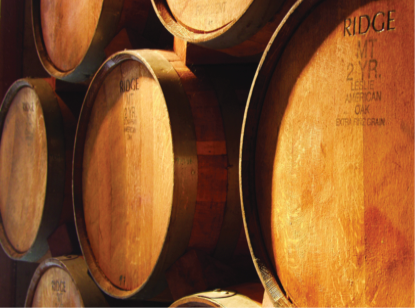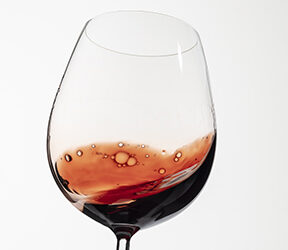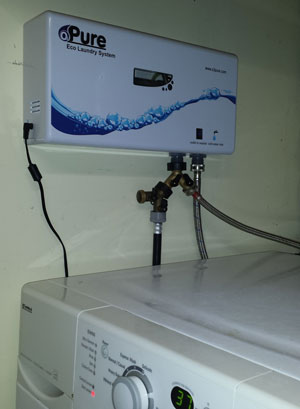Q
I was proud to see my letter was selected for publishing in your great column (October–November 2011). Unfortunately the question was misunderstood. I didn’t intend to suggest stopping “paying back the angel’s share.” In fact, continual topping off has become one of the primary tenets of my wine religion! Instead, I wanted to discuss the possibility that adding back whole wine to the barrel while evaporation took away only water (and alcohol?) wouldn’t result in a concentration of all the other constituents and therefore the flavor, and therefore be something to encourage. Wine in, water out, more wine in, more water out?
Mark Backlund
Anacortes, Washington
A
Thanks for clarifying your question a little bit. I am glad to hear you regularly top off your barrels, it’s a practice all of us need to do. Alcohol and water definitely do evaporate out of barrels (along with small amounts of other volatile aroma constituents of wine) and the resulting headspace does need to get refilled as this occurs. I find that topping monthly, usually replacing between 1⁄4 to 1 gallon every time, is enough to keep my wine sound. The given amount of wine you lose in the “angel’s share” as you refer to it above will change depending on the humidity and temperature of where you store the barrels, as well as the age and stage of your wine. I always lose more volume when my wine is very young and going through ML as it’s so gassy. The CO2 blows off and you lose volume as the wine settles down. And I lose less when the wine is sulfured and simply aging, anywhere after about four months of age. Don’t forget that you also lose volume due to lees loss every time you rack off of lees of course, too.
I have to admit, I’ve never seen an industry or academic study that looked at the concentration of non-evaporating (i.e. color, tannin etc.) compounds in wine over time due to water and alcohol loss being replaced by wine. If you look at it from a physics and chemistry point of view, it would seem that some kind of concentration could be happening. However, as the non-evaporating flavor and texture compounds in wine form less than 1% of the total wine volume (around 0.01–0.5%, most of the volume of water and ethanol) I would imagine that any possible effect would be so slight that the human palate would not detect it. And if we can’t tell the difference, then why do more topping than you normally would?
Remember, every time you open your barrel, you introduce air and potentially some undesirable spoilage organisms. I’m happy only opening up my barrels once a month to top them up. Though you could presumably speed up evaporative loss by warming up your cellar or decreasing the humidity, I’m not sure I would do that either. Warm temperatures, over time, can encourage spoilage yeast and bacteria to grow while dry air will wreak havoc on any barrels that you might have empty and could even dry the outside of full barrels unevenly, possibly leading to barrel integrity problems later on. I’m not sure that any incremental benefit in wine color and flavor concentration you might get (emphasis on might get) would justify tweaking with the rate that wine evaporates from your barrels and has to be replaced by . . . more wine!
Q
I am a small grower (1 acre) and amateur winemaker in Southern California. I have a little more than 60 gallons (227 L) of Merlot (it was a bad year with powdery mildew) and would like to put it into a barrel (60 gallons/227 L) after malolactic fermentation (MLF). After MLF, I was planning to add sulfites and then do my first filtration (bug-catcher filter pads) and then pump it into the barrel. My questions are, is this a good plan, or should I rack it into another tank and the barrel later? Also, what is the average time in barrel for someone going for a big California red? My final alcohol should be 14.3% (although I am a little worried that my alcohol level may be too high for MLF . . .).
Mike Samara
Fallbrook, California
A
So sorry to hear you had a bad year with the powdery mildew. Many growers in California were challenged by 2011, as the cooler weather left lots of us battling botrytis, rot and mildew in many areas of the state. I would suggest you go ahead and get your wine in the barrel now, even though it may not be completely through MLF or the MLF hasn’t started to take off yet. You want to make sure your wine is protected from air in the long run, especially if you don’t hear little carbon dioxide bubbles popping up yet. First of all, you should see if your wine is through MLF already. Sometimes that happens with reds, that a native MLF strain will ferment concurrently with the yeast. If you have inoculated for ML and you haven’t had any signs that it’s active (usually you can hear or even taste little bubbles on your tongue within a week or two of inoculating) I would send a sample to your favorite wine lab of choice to get it checked out. I’d hate for you to have a finished ML fermentation and not know about it; that way you’d never get the SO2 in there and in the meantime you might run the risk of a high volatile acidity or other spoilage microbe taking off in the wine. Your alcohol of 14.3% should be no problem for most commercial ML strains available these days. My favorite “bugs” for home winemakers to use are the direct-add strains which are simply freeze-dried ML bacteria that you sprinkle directly into your storage vessel. No culture to build up, no chance of contamination and no questions about whether you added too many or too few.
I certainly wouldn’t filter the wine until you are sure that it has finished the ML fermentation as filtration will remove the very bacteria you need to complete the job (even a loose “bug catcher” filter will remove some of the organisms and the solids that can help support a healthy MLF). Filtration is also just a cosmetic and/or stability step that we usually take right before bottling. Most winemakers won’t filter a wine after MLF, you simply take it to barrel and rack it off any settled solids a couple of months later. Sometimes winemaking is all about stepping away from the barrel, i.e. just letting nature take its course. In this case, what you’re doing is letting gravity do the heavy lifting, or settling, as it were. You’ll be surprised how clear and clarified you can get a wine just by letting gravity take its time in a barrel.
Q
For the first time in many years of winemaking, I noticed a white and green powdery mold on the wooden basket of my wine press and inside of my wooden fermenting barrel. These items were stored out in a shed and, I think due to rain and humidity this summer, both were infected to the point where they couldn’t be used this year. I have scrubbed the basket of the press with a stiff brush soaked in a meta solution and so far no mold has returned, but someone told me that the mold spores can get way down into the wood. Is the basket no longer any good? Is the cast iron base of the press useable if I clean it with a meta solution? And what about the barrel?
Peter Nero
Brattleboro, Vermont
A
I certainly wouldn’t throw the baby out with the bathwater or the crush equipment out with the sanitizing solution in this case. A little accumulated mold on a wooden basket press or fermentation barrel doesn’t faze this Wine Wizard. It shouldn’t phase you, either, because it sounds like you are taking all the appropriate steps to clean (scrubbing to remove the surface film and mold) and then sanitize (do a deeper dig with a potassium metabisulfite solution) your equipment.
Absolutely, mold spores can get into wood and are sometimes never totally removed. However, you have to look at how you use your equipment. Though I can’t make any guarantees against some heretofore unidentified voracious wine-ruining super-bug, I would wager that the short time the wine is in contact with your wooden basket press while pressing is not long enough to cause major contamination. The wine will be “living” in your fermentation vessel a little bit longer, of course, but during its time there presumably you have inoculated the must with a strong, reliable yeast strain (like I always suggest to my readers). During an active yeast fermentation, those organisms will dominate the environment (that is the idea for a dry, complete fermentation) and will usually out-compete the potential bad guys that might be lurking in your wood.
The cast iron parts should be no problem. If you’re worried, try cleaning using a caustic cleanser on the basket followed by a sulfite or citric acid soak.
Now if you had a storage barrel that was super-covered in rabid-looking fuzzy mold? That might make me pause a little bit. Finished wine doesn’t have the rampant microbial population of a young, strong fermentation and so is a little bit more fragile and needs our help defending itself. It also will be hanging out in that barrel for a long time (presumably about 12 months?) so its house needs to be clean to start with or all sorts of unwanted microbial houseguests could take root. Little bits of mold that easily come off, don’t come back and don’t cause any kind of lingering aromas don’t make me too worried to use a barrel again. But major mold infections in barrels that cause sour smells, volatile acidity or ethyl acetate aromas during empty storage, especially if the smell comes back after a good cleaning, should probably be turned into planters. I feel you’re 100% OK to use your basket press, but leave it to your judgment about how bad the mold in the wooden fermenter looked as to whether you want to use it again.
Q
I am fortunate to have the opportunity to pick grapes at a nearby vineyard that is no longer being used. I was told that the Riesling never really gets sweet enough before frost, but there are also Vidal grapes. I thought the best thing would be to blend the two. Can you give me a rough idea as to what percentage of each I should use?
Barry Tuddenham
via email
A
I think your plan to blend Riesling and Vidal Blanc is a good one. Vidal Blanc is a hybrid white grape that tends to have a nice fruitiness and good acidity. The nice things about Vidal, especially as it relates to your project, is that it has a tough skin, is winter-hardy and is known for decent sugar accumulation and ripeness even in colder areas like upstate New York or Canada. If the Riesling has a problem getting ripe before a frost, I would think adding some of the presumably-riper Vidal would help your overall wine. I would recommend a healthy amount of Vidal
Q
I have some Cabernet/Merlot and old vine Zinfandel fermenting. After fermentation completes I am going to do a malolactic fermentation, although I have never done this before. When it is time to bottle I usually add potassium sorbate to my wine. Will it affect the flavor if I do a malolactic fermentation?
Dennis DiRienzo
East Liverpool, Ohio
A
If your primary fermentation (sugar to alcohol) is complete you shouldn’t have to add any potassium sorbate to your wine. In fact, adding sorbate to wine after performing malolactic fermentation (ML) can cause an unwanted effect in the finished wine — potassium sorbate reacts negatively with lactic bacteria and results in a geranium-like off-odor. The alternative to using sorbate when you plan to use an ML in your wines if you are worried about refermentation is to stabilize the malolactic-fermented wine with sulfite followed by a fine filtration, then monitor the wine during bulk aging to ensure that fermentation does not restart.
I am also personally not a big potassium sorbate fan as it sometimes can have a pineapple type off-aroma that I don’t find attractive. Similarly, I’m not really into adding things to my wine when I don’t have to. Will ML fermentation affect the flavor of your wine? Definitely, and that is one of the main reasons why winemakers do it. ML fermentation always de-acidifies the wine a little bit and sometimes, depending on the strain of ML bacteria you use and the components in your initial wine, you can get some cheesy or buttery notes in the aroma and a general rounding-out of the flavor profile and mouthfeel. I find all of these effects to be a positive, especially in red wines, and perform MLF on all my red wines, as do most of the commercial winemakers I know. Good luck with your wine and new procedure!






